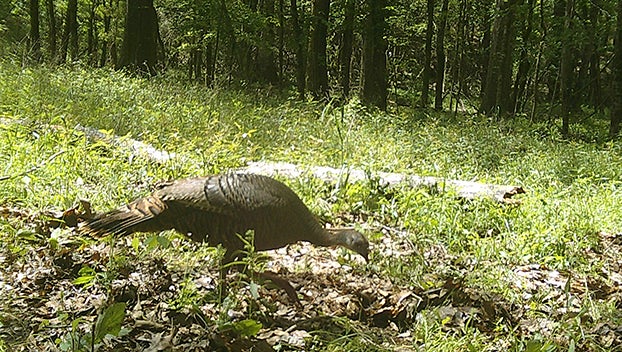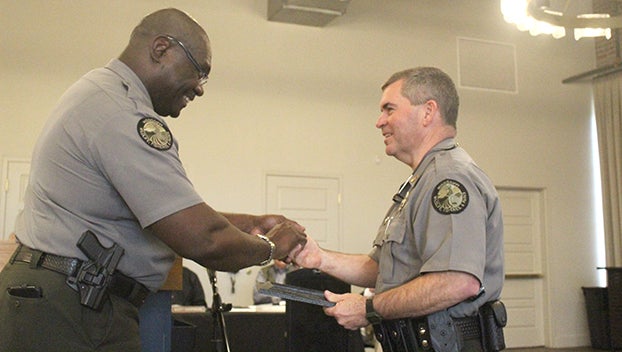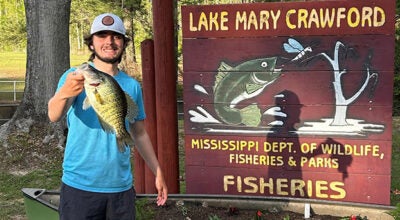Turkey season is on the way, is your habitat ready?
Published 3:00 pm Wednesday, February 14, 2024

- A hen scratches for food in a food plot in Lincoln County. (Hunter Cloud's Trail Camera | The Daily Leader)
BROOKHAVEN — We are two weeks into February and at time of publication, Turkey season is 29 days, 14 hours, 10 minutes and 40 seconds away from starting. Toms and hens will begin courting in late February and early March, hunting season will open on March 15 and hens will start to nest with spring green up.
As previously reported in The Daily Leader, February is a great time to work on habitat projects which are beneficial to wild turkeys, deer and other species dependent on early successional habitat for their first part of life history. Landowners, hunters and habitat managers may not be able to burn in the wet conditions but they can take other steps to set plant succession back.
Nesting cover
Mechanical disturbance, whether it be disking with a tractor, cutting trees with a chainsaw or using hand tools to thin out brushy cover, are tools to create habitat needed by turkeys. Hens will begin to nest at the onset of spring green up. Nesting cover is usually found two to five years after disturbance.
University of Tennessee conducted a study looking at wild turkey nesting selection and behavior. Research found the hens preferred early successional habitat and shrubland for nesting despite the fact this habitat type made up less than 10 percent of the available habitat.
The study suggested cover which conceals the hen may increase the chances for nest survival and habitat availability spread out across the landscape forces nest predators to search larger areas and thus be less successful. At the same time, nest cover accounted for little variation in survival of the nest.
Hens lay one egg per day during the spring until they have a complete clutch of eggs between eight to 12 eggs. According to the MSU Extension Service publication on Wild Turkey Ecology, hens periodically incubate the eggs during the final days of egg laying and constantly incubate eggs after the last egg is laid. The timeframe for incubation is from mid-April to mid-May
Hens leave their nests during this time for short breaks to feed but are largely vulnerable for 28 days. Providing food and water in close proximity and within nesting cover may help hens survive the four week incubation period according to the MSU publication.
Brooding cover
Young turkeys are called poults and collectively form a brood. Poults are at high risk of predation in the first few weeks of life when they are flightless. According to the MSU Wild Turkey Ecology publication, sometimes 10 to 20 percent of poults make it through the summer into fall populations.
Low growing and lush vegetation can be crucial for poults to remain concealed from predators while encouraging an abundance of insects which the poults eat. Between 10 to 14 days after hatching, Poults are able to fly to low hanging limbs to remain out of reach of predators at night.
Brooding cover is typically found the year of and year after disturbance. It is important to remove any thatch when you create brooding cover. Young poults are unable to walk through thick carpet forming grasses even if the remaining habitat structure is ideal. Quality brooding cover is usually one to two feet high while nesting cover is high enough to conceal a hen.
Habitat managers should think about creating diverse areas of nesting and brooding cover when managing turkeys. Daylighting roads, thinning timber stands and removal of invasive species such as privet can encourage the growth of cover needed for nesting and brood rearing.
It is best to hold off on mowing or brush hogging until well into the summer. The same cover used by turkeys is often used for fawning cover by deer.





